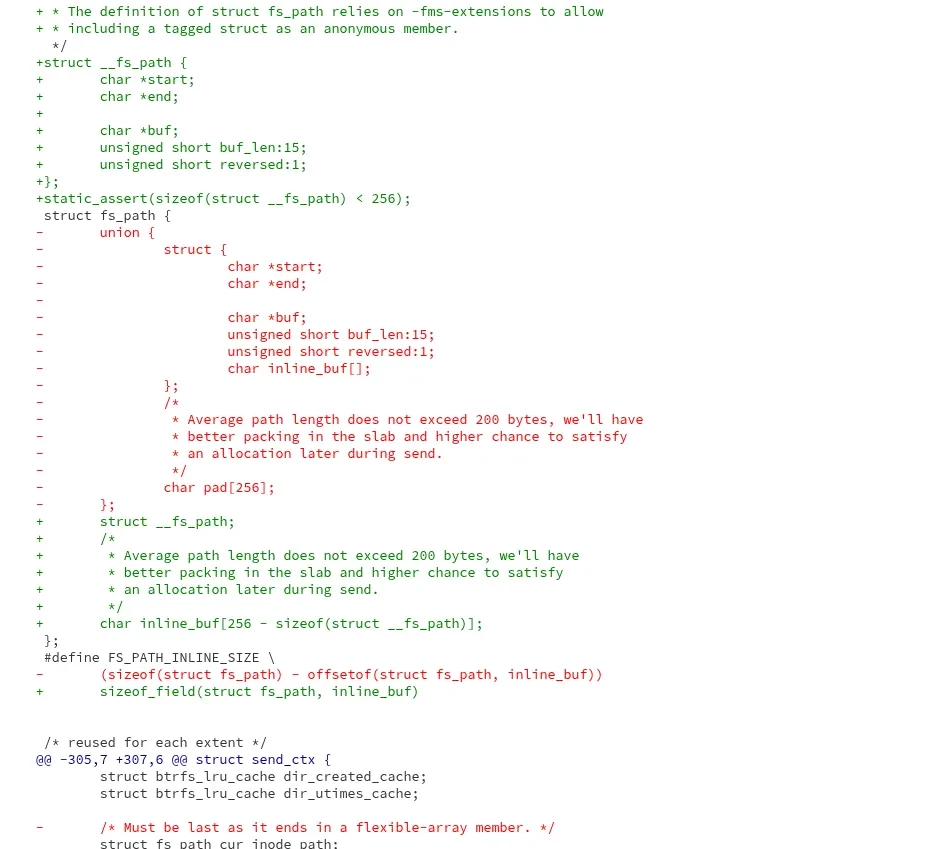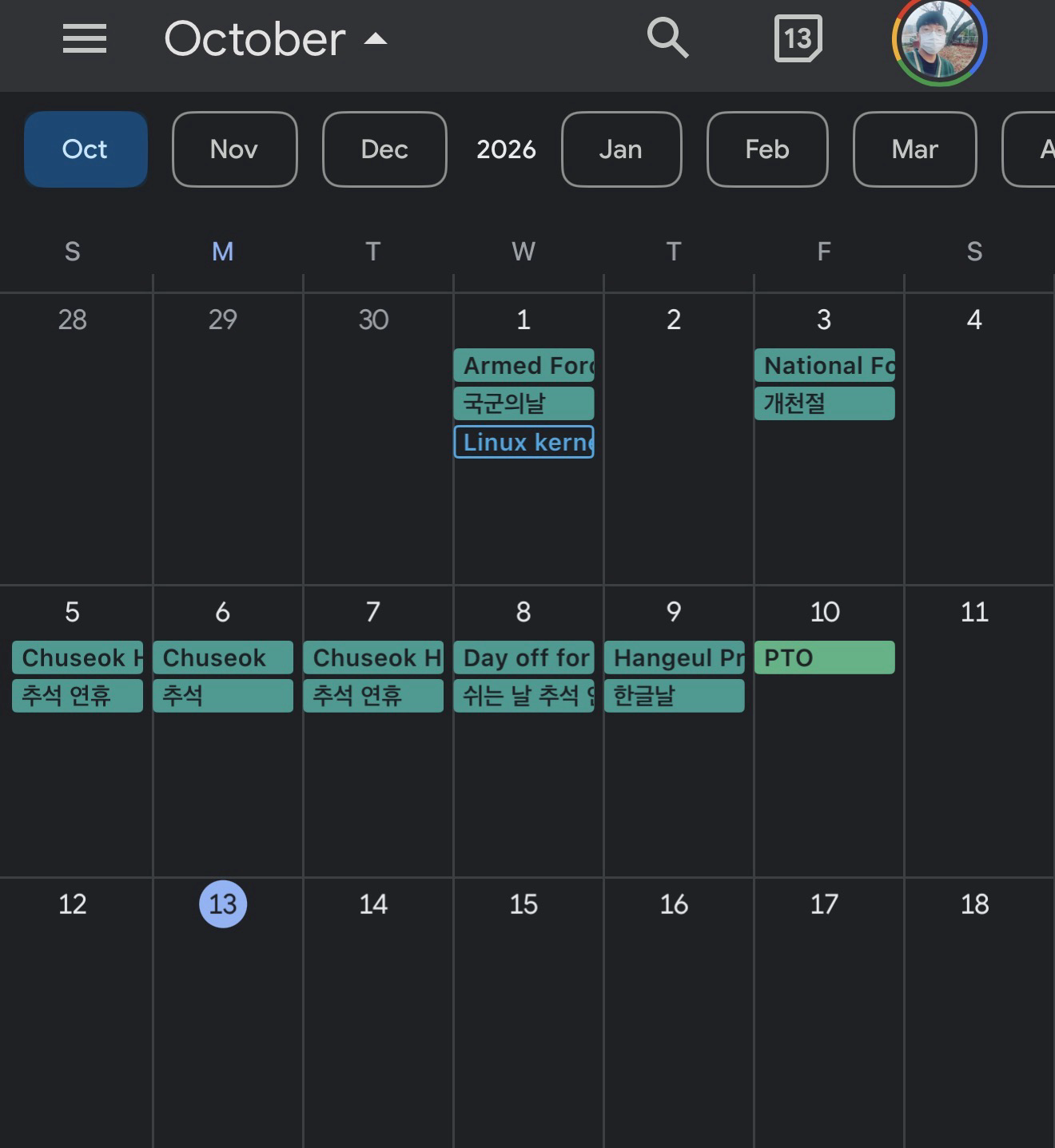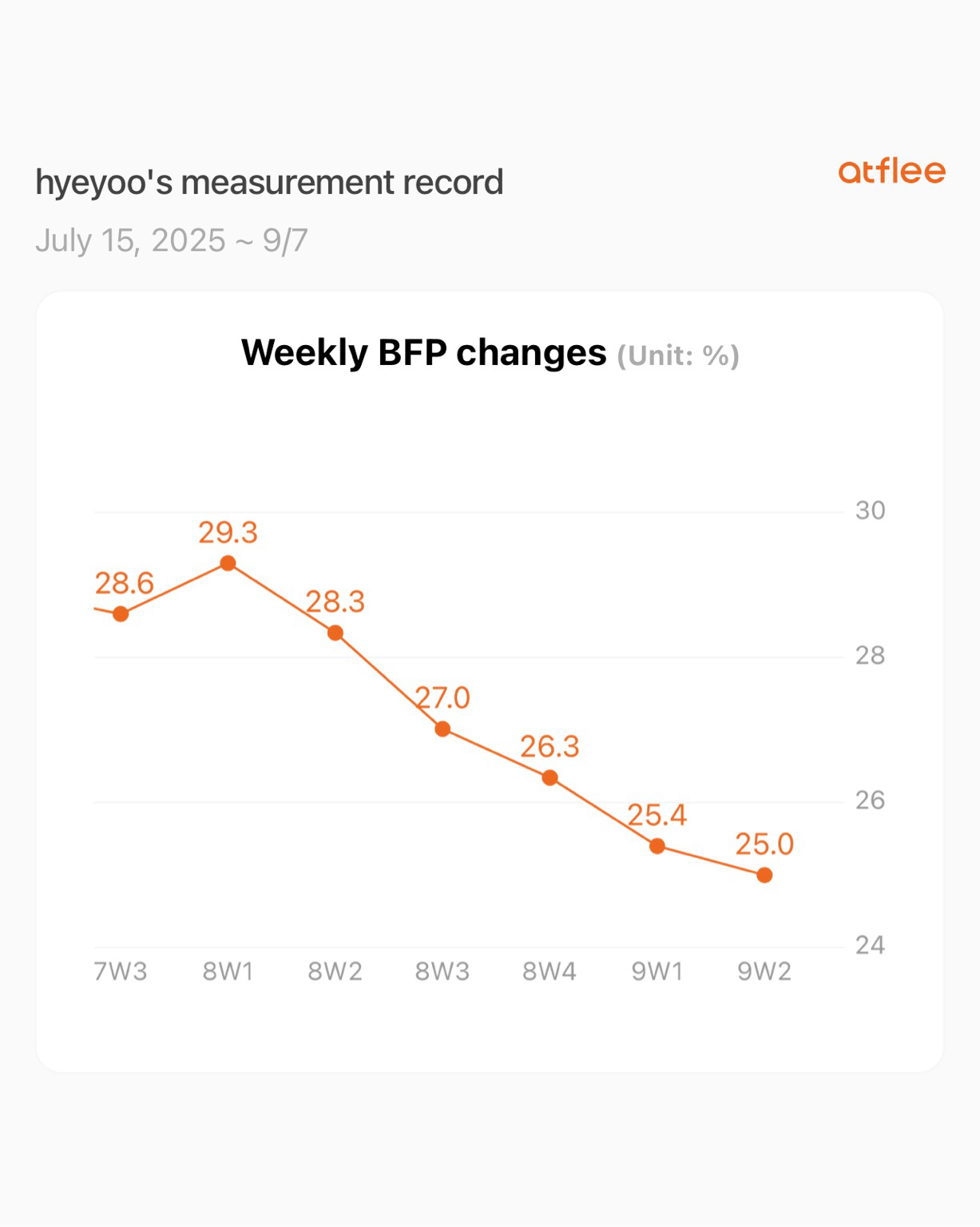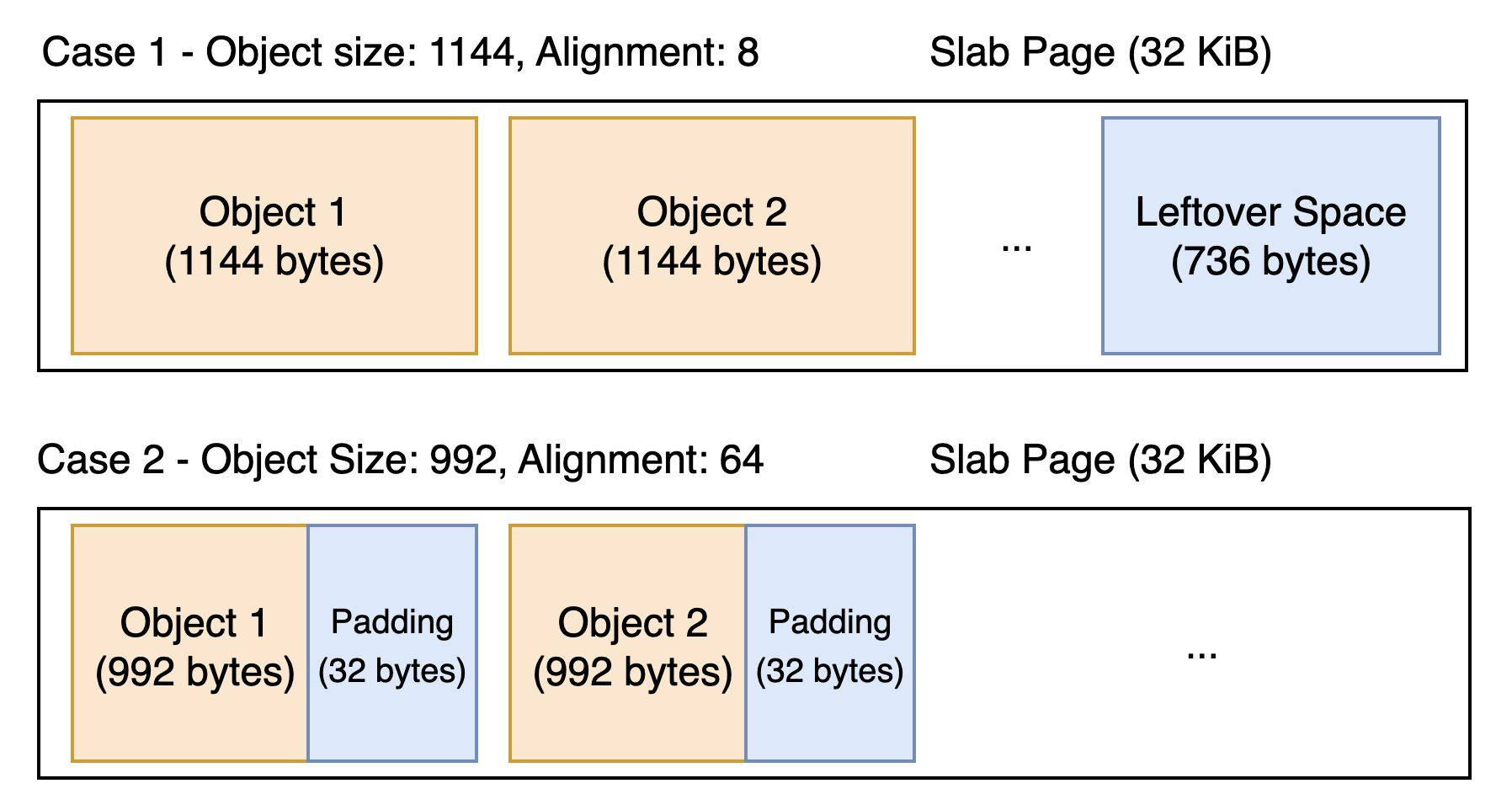Posts
579Following
105Followers
118- Linux Kernel Developer @ Oracle (Linux Kernel MM) (2025.02 ~ Present)
- Reviewer for the Linux Slab & Reverse Mapping subsystem
- Former Intern @ NVIDIA, SK Hynix, Panmnesia (Security, MM and CXL)
- B.Sc. in Computer Science & Engineering, Chungnam National University (Class of 2025)
Opinions are my own.
My interests are:
Memory Management,
Computer Architecture,
Circuit Design,
Virtualization
Vlastimil Babka 🇨🇿🇪🇺🇺🇦
vbabka@mastodon.socialWith the current RAM prices, let me remind you of my solution from 2017 that unfortunately wasn't merged, but maybe it's time to revisit it? https://lore.kernel.org/all/20170401211813.15146-1-vbabka@suse.cz/
Phoronix
phoronix@masto.aiLinux 6.19 Goes Ahead And Enables Microsoft C Extensions Support
Last month I reported on Linux 6.19 looking to enable Microsoft C Extensions support throughout the Linux kernel with setting the -fms-extensions compiler option to allow Microsoft C Extensions when building the kernel. Linus Torvalds today merged that support without objections...
https://www.phoronix.com/news/Linux-6.19-Enables-MS-Ext
Harry (Hyeonggon) Yoo
hyeyooHope this is helpful when I'm testing something or reviewing complicated code
Wuzzy
Wuzzy@cyberplace.socialNew TLDs just dropped:
🌐 .com: community (discussion board)
🌐 .org: oranges, or the color orange, or both
🌐 .net: everything about nets EXCEPT computer networks
🌐 .gov: Grand ObserVatory. Astronomy-related
🌐 .mil: Moms in Love. Lesbian-friendly place
🌐 .int: Integers. Everything about one number, for example: 25.int
🌐 .edu: Ethylene diurea (an organic compund)
Vlastimil Babka 🇨🇿🇪🇺🇺🇦
vbabka@mastodon.socialRE: https://mastodon.social/@workchronicles/115534588198704665
This is how I present the lkp perf improvement reports for my patches, yeah.
Vlastimil Babka 🇨🇿🇪🇺🇺🇦
vbabka@mastodon.socialOh wow, what a loss for RH! https://lore.kernel.org/linux-mm/20251103103659.379335-1-david@kernel.org/T/#u
Vlastimil Babka 🇨🇿🇪🇺🇺🇦
vbabka@mastodon.socialOn Thursday, I sent this RFC: https://lore.kernel.org/lkml/20251023-sheaves-for-all-v1-0-6ffa2c9941c0@suse.cz/
On Friday, there was the expected phoronix coverage. But also an unexpected one:
https://www.nytimes.com/2025/10/24/learning/word-of-the-day-sheaf.html
Harry (Hyeonggon) Yoo
hyeyooA lot has happened in my personal life this week (nothing serious, don’t worry). Everything seems to be settled now thankfully.
Lorenzo Stoakes
ljs@mastodonapp.ukI've found that often people ask advice and want a _certain kind of reply_.
Then I give my actual one and get ignored.
This is why I don't really bother replying to 'how do you get started in the kernel' type questions so much now :)
People want some dopamine hit 'inspirational' message that massages their ego.
And you can find ENDLESS fuckers on this site who will give you that, the type who wear fancy scarfs and never reply to anybody who is 'below' them.
But they're lying to you guys.
The truth is the truth.
I have the same experience when people ask about weight loss...
It's very much the case that holywood/internet versions of laudable qualities are in strict contrast to how they actually look.
Courage, persistence, resilience, strength are all extremely gritty, nasty, unpleasant things that often get you ostracised.
Much easier to kid yourself and live in some opium-fuelled dream of how the world is. But people don't seem to like to wake up to that :)
Harry (Hyeonggon) Yoo
hyeyooPhoronix
phoronix@masto.aiLinux 6.18 sched_ext Preps For Cgroup Sub-Scheduler Support
The sched_ext scheduler framework that allows creating kernel thread schedulers via BPF programs is ready with some updates for the Linux 6.18 kernel...
https://www.phoronix.com/news/Linux-6.18-sched-ext
Vlastimil Babka 🇨🇿🇪🇺🇺🇦
vbabka@mastodon.socialThis week I once again had a great time at @KernelRecipes ! Thanks a lot for inviting me, and for organizing such a nice conference! (and also for all the nice speaker and attendee gifts :)
Also glad we increased the SUSE presence from just me last year to 4 people this year! (which miraculously required only 2 more people to attend, who weren't there last year).
#kr2025
Lorenzo Stoakes
ljs@mastodonapp.ukA big issue in the kernel are asymmetries between review resource and patch submission.
If you have 20 inexperienced kernel engineers all doing big difficult work and submitting large series that need TONS of review (and sometimes essentially development-via-review) and only a few reviewers, you have a problem.
What compounds this is that not all review is equal.
It seems most people will only really look at the surface, and rather happily give tags.
I think that technical skill is not enough for review [as I have said very often - soft skills are the actually core ones] - you have to be willing to say no, you have to be willing to consider the wider picture.
Finding people who have the right skills, are willing to handle the stress + thanklessness, & who have the time is not easy.
So the asymmetry I think is insoluble.
It'd be good if we could have stricter controls to throttle incoming series though.
Harry (Hyeonggon) Yoo
hyeyoo- Five workout sessions per week (focusing on losing fat)
- Eating only 2 sandwiches per day (most of the time!)
Target weight is about 70-75kg... so still a long long way to go.
Marco Elver
melver@fosstodon.orgPrototype for type-based partitioning of Linux kernel slab caches: https://discourse.llvm.org/t/rfc-a-framework-for-allocator-partitioning-hints/87434/24?u=melver
Compiler seems to be doing a good-enough job of inferring allocated types per /proc/slabinfo. With the diagnostic -Rpass=alloc-token I can see about 965 allocation sites where it failed to infer the allocated type, but most of them are "bag of bytes", and only few with complex sizeof calculations like struct_size that are too opaque right now (but can be fixed).
Harry (Hyeonggon) Yoo
hyeyooWhen memory cgroup and memory allocation profiling are enabled (the former being very common in production and the latter less so), the kernel allocates two pointers per object: one for the memory cgroup to which it belongs, and another for the code location that requested the allocation.
In two special cases, this overhead can be eliminated by allocating slabobj_ext metadata from unused space within a slab page:
- Case 1. The "leftover" space after the last slab object is larger than the size of an array of slabobj_ext.
- Case 2. The per-object alignment padding is larger than sizeof(struct slabobj_ext).
Thanks to @vbabka who suggested an excellent general approach to cover Case 1 and 2 with a minimal performance impact on the memory cgroup charging code (more details in the cover letter)
For these two cases, one or two pointers can be saved per slab object. Examples include the ext4 inode cache (case 1) and the xfs inode cache (case 2). That results in approximately 0.7-0.8% (memcg) or 1.5-1.6% (memcg + mem profiling) of the total inode cache size.
https://lore.kernel.org/linux-mm/20250827113726.707801-1-harry.yoo@oracle.com/









